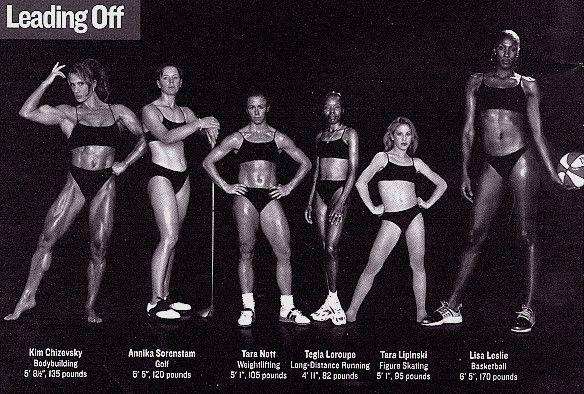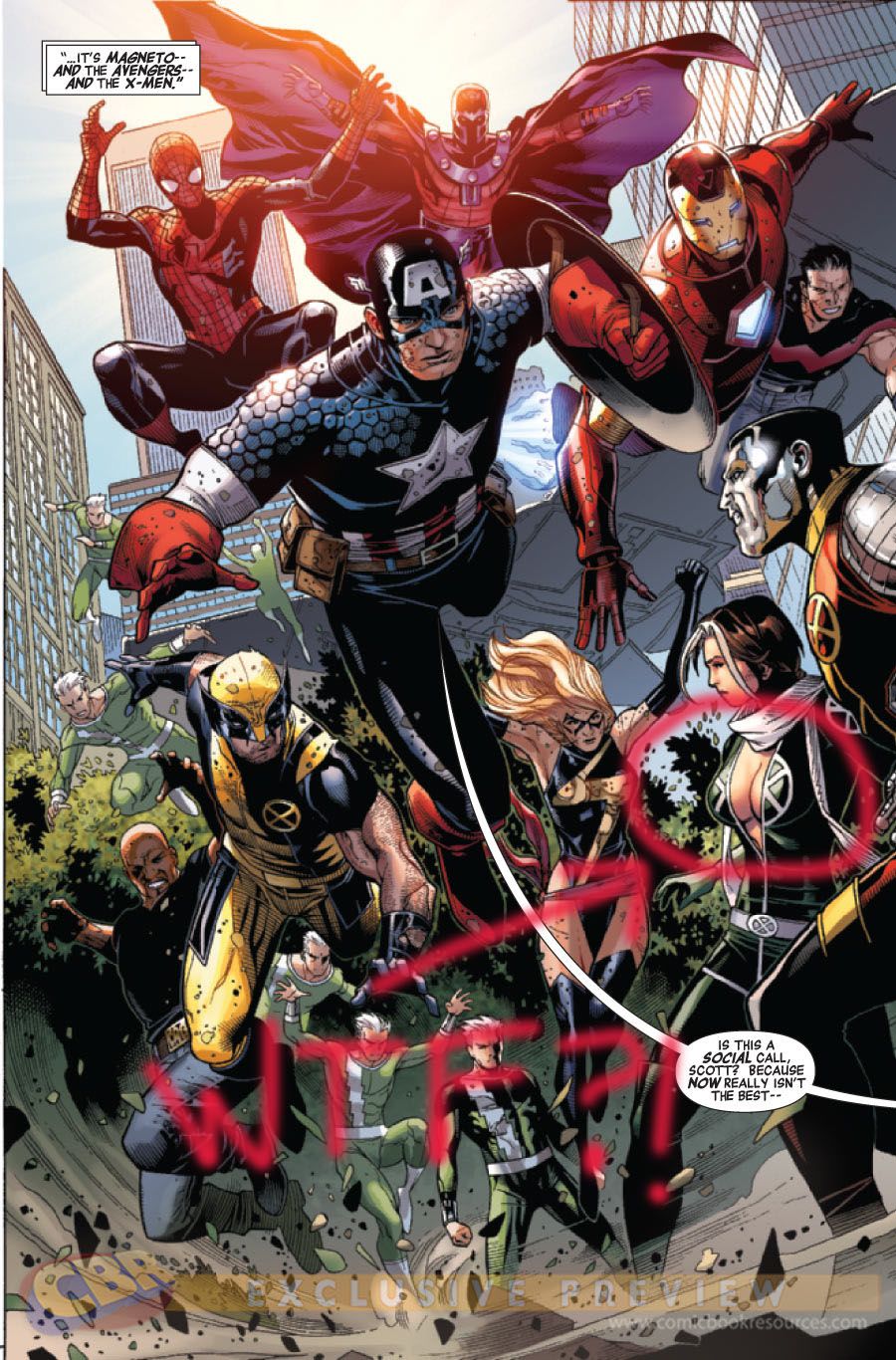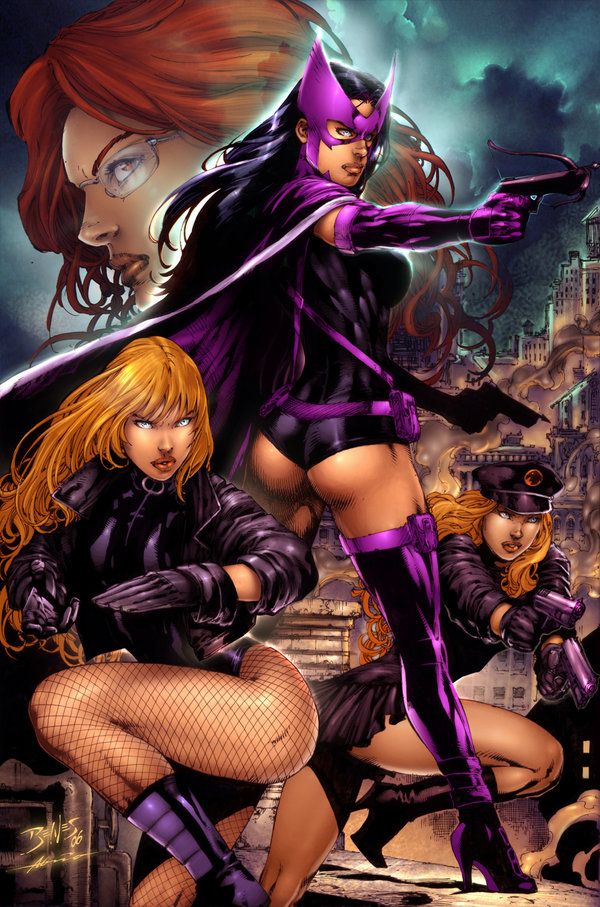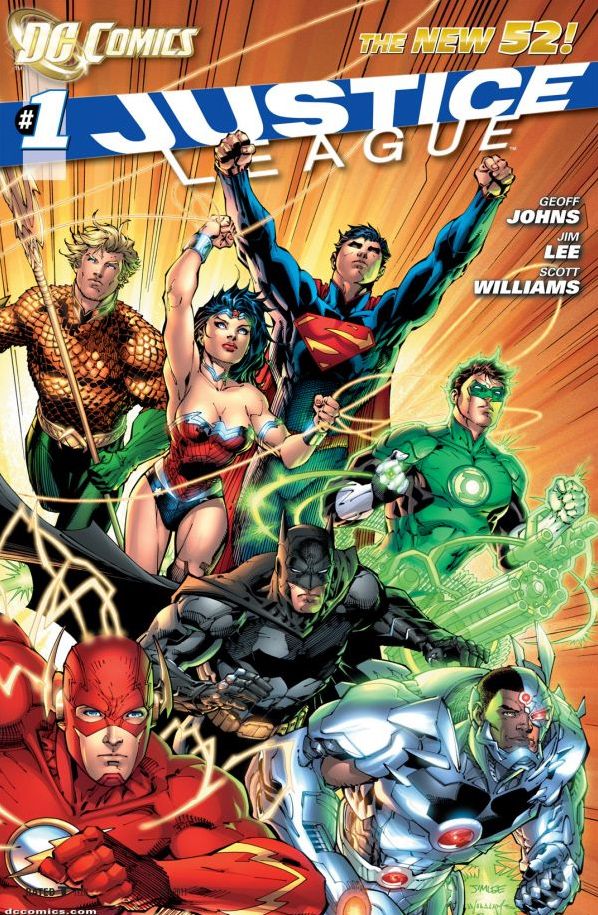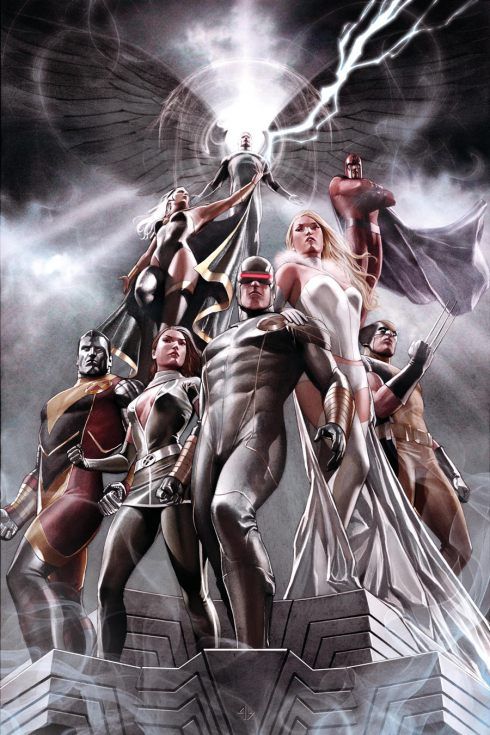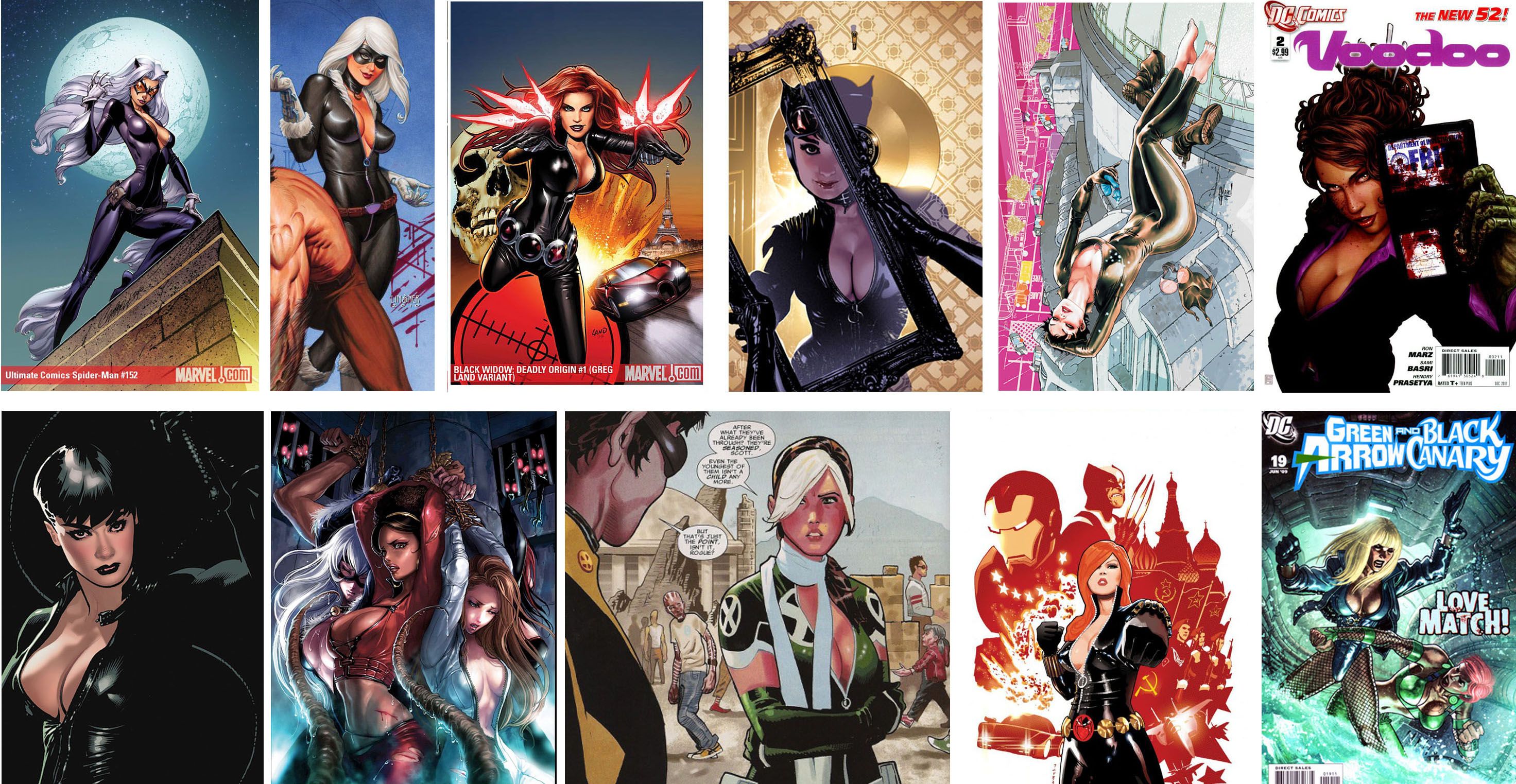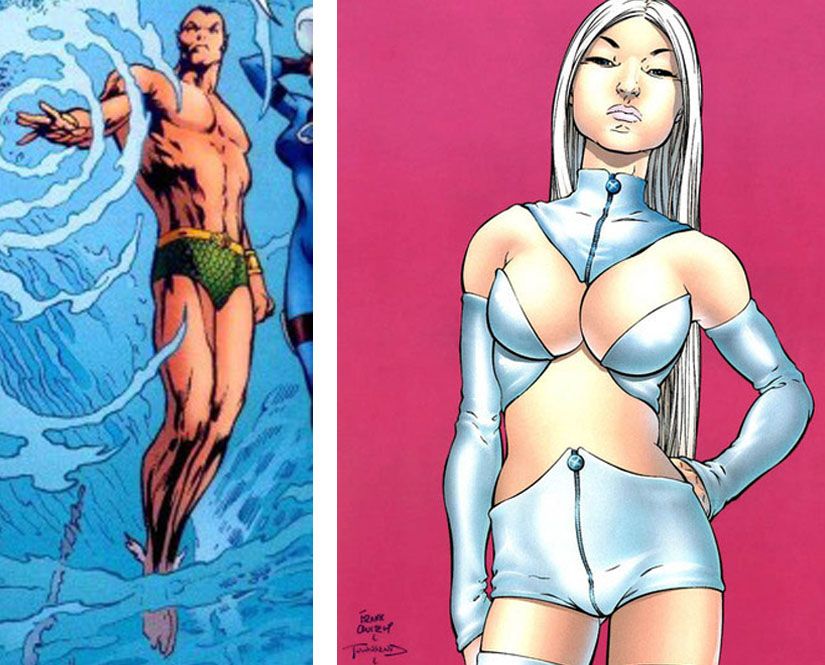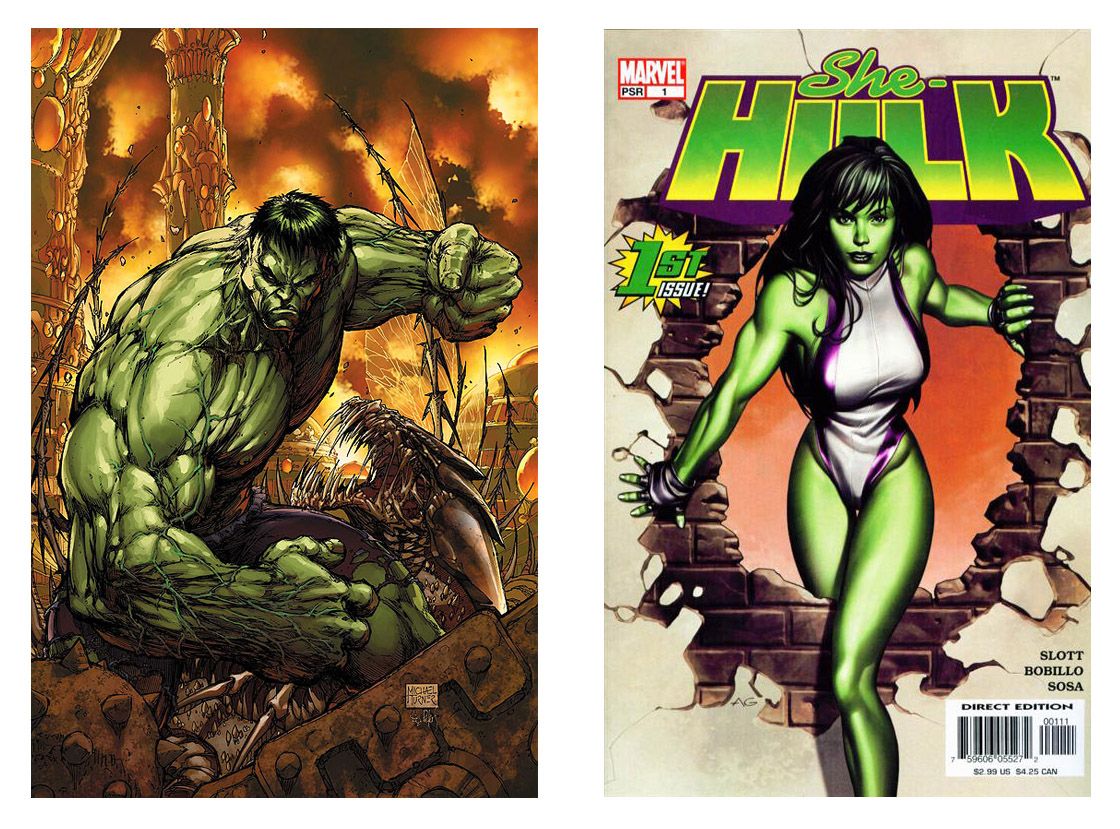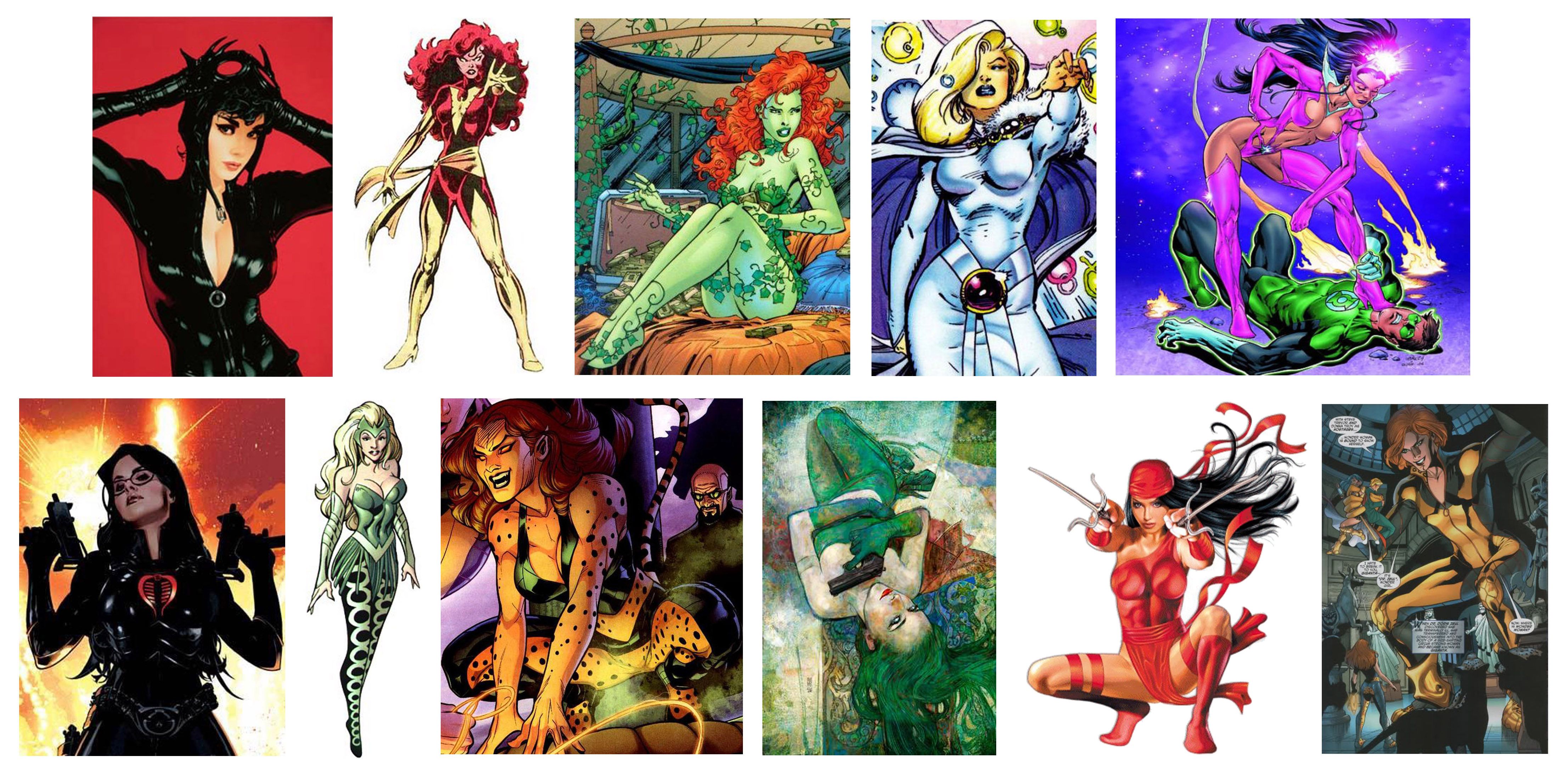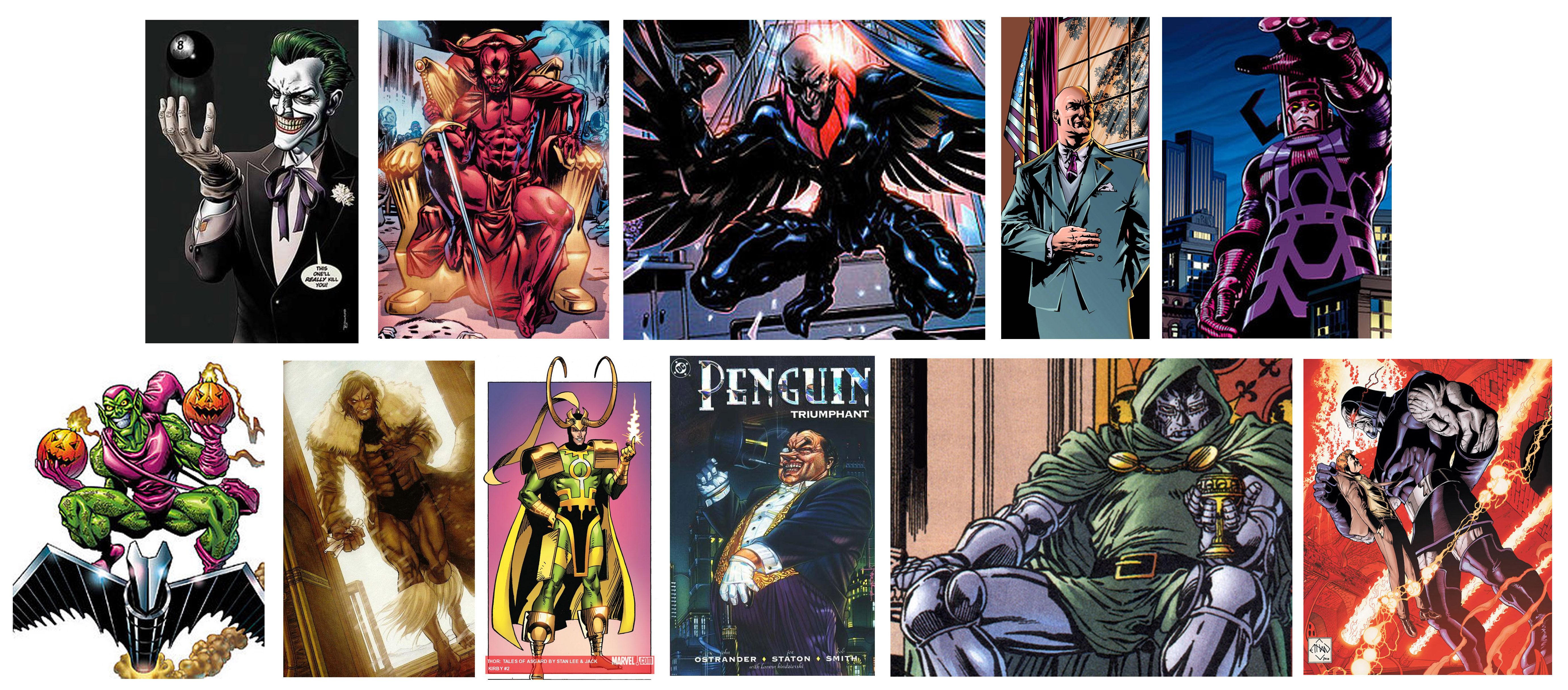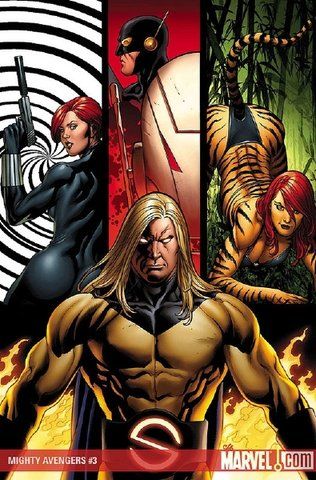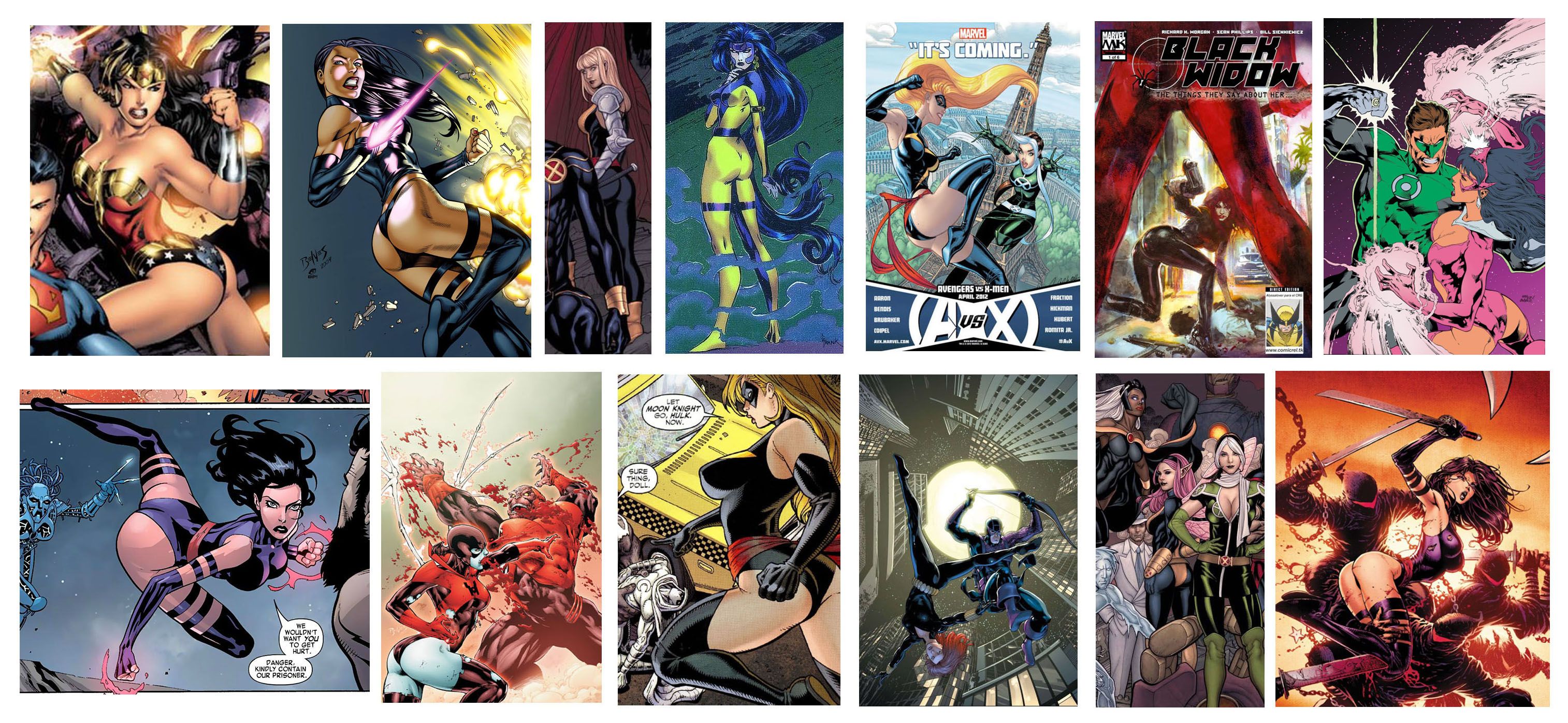So I’ve been sitting on this post for nearly two years.
Why you ask? Well, because I knew it would cause a ****storm, as any comics column that’s remotely controversial does, especially it seems when written by a woman. I had also decided, partway through writing She Has No Head! that I was going to take a decidedly more positive tact for the column, primarily focusing on books that are good, and what I’d like to see more of, supporting creators that are getting it right.
But there’s a lot of talk these days, and many good columns written about women in comics, feminism, and in particular the sexism of comics by way of the objectification and hyper-sexualization of female characters and related issues. Most people who read this column regularly know how I feel about these issues. The short version is that I think it's a big problem that extends far beyond comics and like other media, it really affects the way people view women, and how women, especially young women, view themselves. I don't think "it's just comics" and it doesn't matter. I think media is a powerful thing in our society and that there's a trickle down effect in seeing these portrayals reinforced over and over again. These portrayals shape how we view and value women and contributes to everything from sexism in the work place to eating disorders. I don't think comics are the only media to blame, but it does happen to be the medium I write about, so here we are. However, this column is not actually a discussion of my thoughts on this issue, it's an answer to the oft repeated knee-jerk response I see to these pieces. When I read the comments section of a piece that talks about these issues, without fail, in the comments section I come across one idea over and over again...
“The, "Comic books are sexist to women" argument does not work, simply because it is not just women who are being objectified.
It isn't about 'how' the characters are objectified, it's about the fact that they are objectified at all. And men and women are both idealized in ridiculous fashions. That is why the argument on how women in comics are objectified will forever be flawed, because it is not an objective criticism.”
This particular comment was on the excellent David Brothers piece for Comics Alliance. These comments come in a variety of different flavors of course, and the one above is not particularly offensive or rife with vitriolic hatred, as they often are, but it’s the idea itself that is just painfully shallow. You can find some version of this comment (many versions in fact) on any piece about sexism and objectification in comics. And so, sick of seeing this completely flawed and tunnel vision argument repeated ad nauseam, I decided to break it down once and for all in my column. Because while you can personally decide that you LIKE seeing objectification of women in your comic books, and you can decide that you are quite content with the status quo, or that you don't think it's detrimental to women and it doesn't bother you, the idea that women and men are treated visually the same in superhero comics is utter crap. In other words, “No, It’s Not Equal.”
When I look at the way characters are rendered in superhero comics for more academic purposes, I look at four primary categories: Body Type, Clothing, Beauty, and Posing. So I’m going to break each of them down...here we go!
1. Body Type.
Both men and women are given crazy nearly unattainable idealized bodies in comics, we can all agree on this. But that is where the equality ends. Men are generally portrayed with idealized ATHLETE body types. While women are generally portrayed with idealized PORN STAR and SUPERMODEL body types. Which would make sense if the women were not actually superheroes. But they are, and so making them porn stars and supermodels doesn’t make a lot of sense. If women, like men, were rendered like gymnasts, swimmers, runners, boxers, tennis pros, and body builders, you’d see far fewer objections, because that would make things quite balanced. An idealized athletic form that few of us can achieve but many of us would admire or like to have, is imminently reasonable for a superhero form, but that’s not what we get, instead we get idealized (and wholly unrealistic) supermodel and porn star types.
And the larger issue is not the believability, but the connotation. An athletic male form suggests strength, power, and ability - all traits that make sense for superheroes.
Porn star and model body types suggest beauty, sex, and frequently, submissiveness. None of those qualities tie directly to superheroes.
It’s important to remember that idealization of the form is not the same as sexualization of the form. Something can be idealized without being sexualized. But in superhero comics, because the forms that female characters are based on have their roots in porn and models, the form becomes even more sexualized once it is idealized to perfection. Is there anything wrong with perfection in fictional stories? No. Is there anything wrong with superheroes being beautiful sexual beings? Of course not. Is there anything wrong with titillation for the sake of titillation? No, not in the right context. But because the vast majority of female superheroes are rendered this way, it leaves context out. It becomes ALL about titillation and sex, regardless of context. And that creates a problem. And it’s one of the many ways that anyone interested in looking at things objectively can see that...no, this is not equal..
2. Clothing.
As readers of superhero comics we call ALL agree that most superheroes, both men and women, are subjected to the incredibly unforgiving spandex, latex, leather, etc. Spandex (etc.) is skintight and leaves little (if anything) to the imagination, but women are simply not dressed the same way that men are. Men, almost universally are covered from head to toe, while women are regularly subjected to: swimsuits, thongs, strapless tops, tops with plunging necklines, stiletto heels, boob windows, belly windows, thigh highs, fishnets, bikinis, and - apparently all the rage lately - costumes unzipped to their stomachs, etc. This is not equality.
Let’s look at ten of the (arguably) most popular marquee superheroes – Batman, Superman, Spider-Man, Iron Man, Green Lantern, Aquaman, Flash, Captain America, Wolverine, and Thor. Every single one of them are covered – almost literally head to toe. The most flesh you’d see on any of them are Thor and Wolverine’s arms. Scandalous!
And now let’s look at ten of the most popular marquee superheroines: Wonder Woman (strapless swimsuit, sometimes a thong, sometimes heels), Catwoman (regularly unzipped, frequently heels), Ms. Marvel (swimsuit, sometimes a thong, thigh high boots), Storm (strapless swimsuit, thigh high boots, sometimes heels), Batgirl (fully covered, sometimes heels), Black Widow (regularly unzipped, sometimes heels), Invisible Woman (fully covered – for now at least), Black Canary (swimsuit, sometimes a thong, fishnet stockings, sometimes heels), Rogue (as of late – constantly unzipped), and Power Girl (boob hole, swimsuit, sometimes a thong, sometimes heels).
Of those ten women, only one has been consistently covered up the way her male counterparts are - Batgirl. The rest have been (or are being) subjected to a series of costumes that are quite frankly, bizarre. That make no sense for what they do, or who they are. And I’ve left off many of the worst offenders – the Star Sapphires and Psylockes of the bunch. You’ll note I’ve also left off characters like Emma Frost/The White Queen, who you can actually make an argument for dressing provocatively. And that’s where we get to the why. Why do these costumes make sense? When a male character has a crazy revealing costume it’s for a reason. Namor sometimes wears a Speedo. But that makes a certain amount of sense both from a job perspective (he lives in the ocean and is nearly invulnerable) and from a character perspective (he’s a known lothario and braggart who seems like he’d enjoy showing off his body). Similarly, Emma Frost’s insanely sexy costumes (she frequently wears what is essentially lingerie to fight crime) make a certain amount of character sense (she’s an extrovert that constantly trades on her looks and makes no attempt to hide this) and now that she can also turn into a diamond, she can be nearly indestructible when she desires and she likes to show off her pretty diamond skin, so the more skin available, the better as far as she’s concerned. And so like Namor, Emma makes some sense. But Emma doesn’t makes sense if she’s standing next to Storm in a strapless swimsuit and thigh highs, Rogue with her costume unzipped to her stomach, and Psylocke in a thong swimsuit. It’s as if Namor, Wolverine, Cyclops, and Colossus were all wearing swimsuits. What sense would that make?
Again, you can like to see things this way until the cows come home. You can personally love those sexy costumes and think they’re wonderfully designed and never want it to change, that's your prerogative, but let’s not pretend it’s equal, okay?
3. Beauty.
Like idealized forms and spandex, beauty is a common denominator in superhero comics. It's just a fact. Not unlike Hollywood, superhero comics tend to show a world full of people that are exceptionally attractive (and mostly white, but that's a whole other post).
However, men are still allowed to look a bit like "monsters"...on occasion. For women it's incredibly rare, unless they ARE in fact "monsters". And even when they are "monsters"…they’re still frequently possessors of beautiful bodies and/or sex appeal.
Beauty, being perhaps even more subjective than body type idealization is tougher to talk about, but one of the most obvious examples of this disparity between male and female superheroes is in The Hulk. Bruce Banner as The Hulk? Frequently drawn as a pretty terrifying monster and certainly not considered stereotypically handsome. Jennifer Walters as She-Hulk? Stone. Cold. Fox.
Let’s look at the villains shall we? Here’s a random selection of some of the most popular villains my boyfriend and I could think of for both genders:
The disparity is a little alarming, isn’t it?
Don't get me wrong, I don’t want or expect all characters to be unattractive. I understand that we all want to lose ourselves to a degree in fantasy. That fictional worlds provide an escape that we all want. Hell, I grew up wanting to be these heroines because they were powerful and beautiful, I’m not immune to it. We’re all socially conditioned to want youth and beauty, and we’re all conditioned to think specific things are beautiful, but that doesn’t make it right, it doesn’t mean we shouldn’t try to educate ourselves against it. And it doesn’t make it equal between the sexes. It's much more frequently true that women are required to be beautiful no matter what, while men have much more flexibility. From anti-heroes to superheroines, and from femme fatales to full blown supervillains it’s rare to find a female character that isn’t drop dead gorgeous. There have been examples of it over time – Brian Michael Bendis and Michael Gaydos’ Jessica Jones from Alias was a very ordinary looking woman by mainstream comics standards. But like many female characters that start out less stereotypically attractive (Marrow, Angel Salvatore, Callisto, etc.) Jessica Jones has now been reverted to drop dead gorgeous type. There are examples of women that break this rule in superhero comics, but it’s exceptionally rare.
4. Posing.
Posing is perhaps the most persuasive argument in the arsenal, because it’s such a prevalent and well-known fact that there’s an actual term that has been coined. The brokeback. The brokeback pose is when a female character literally looks as if her back is broken, because that is how she must pose in order to show readers both her tits and ass simultaneously. When a word has been created in order to name this phenomenon, I feel like I should just be able to say BROKEBACK! and let that be it, but in the interest of not phoning it in, let’s talk a little bit more about this and look at some examples.
Even before you get to something as extreme as brokeback you can look back at the athlete vs porn star images on which our characters are based. Because while male superheroes pose somewhat ridiculously quite often - they are still posing as athletes, heroes, conquerors, and badasses. They generally look powerful and in control.
In contrast female superheroes are generally not posed like athletes or superheroes, but as pliant submissive porn stars and preening supermodels. With alarming regularity they don’t look like athletes, heroes, conquerors, or badasses, but as nothing more than soulless beautiful objects and sexual temptresses, and so that is the assumption readers can make as well. Women as objects. Women as sexual. Women certainly not as heroes.
And this is the most damning evidence that gets us to blatant objectification and hyper-sexualization. More specifically, that the sexual aspects of a man are not highlighted with regularity in superhero comics. In fact, the areas generally considered the most sexual are frequently glossed over in representations of male superheroes. Meanwhile all of a woman’s most sexual aspects are put on most prominent display, which brings us back to brokeback and the attempt to show as much sexuality as possible in every single image.
Just look at this stuff:
You almost never see men posed this way - i.e. overtly sexually. In fact, when it does happen (Nightwing!) it becomes a whole "thing" unto itself, that's how rare it is. And there are entire memes devoted to comparing the way male characters pose with the way female characters pose.
And again I have to say, you are free to like this, and to advocate for it if you think it’s really the best thing about superhero comics and something that you love about the medium and genre no matter what, that’s your prerogative, but please, stop with this cry of “It’s equal!” because it’s really really not.
I’ve frequently heard the argument that superhero comics are primarily male power fantasies – that men want to be those powerful men and they want to have those beautiful sexy submissive women on their arm and I’m sure there’s a certain amount of truth to that. But I think it appeals to the lowest common denominator. Superhero comics can be (and frequently are) so much more than that, and they can (and should) appeal to a much wider audience, for everyone’s benefit including their own. One way to do that is to actually make the representation of men and women in superhero comics a bit more equal. Cause it sure ain’t there now.

